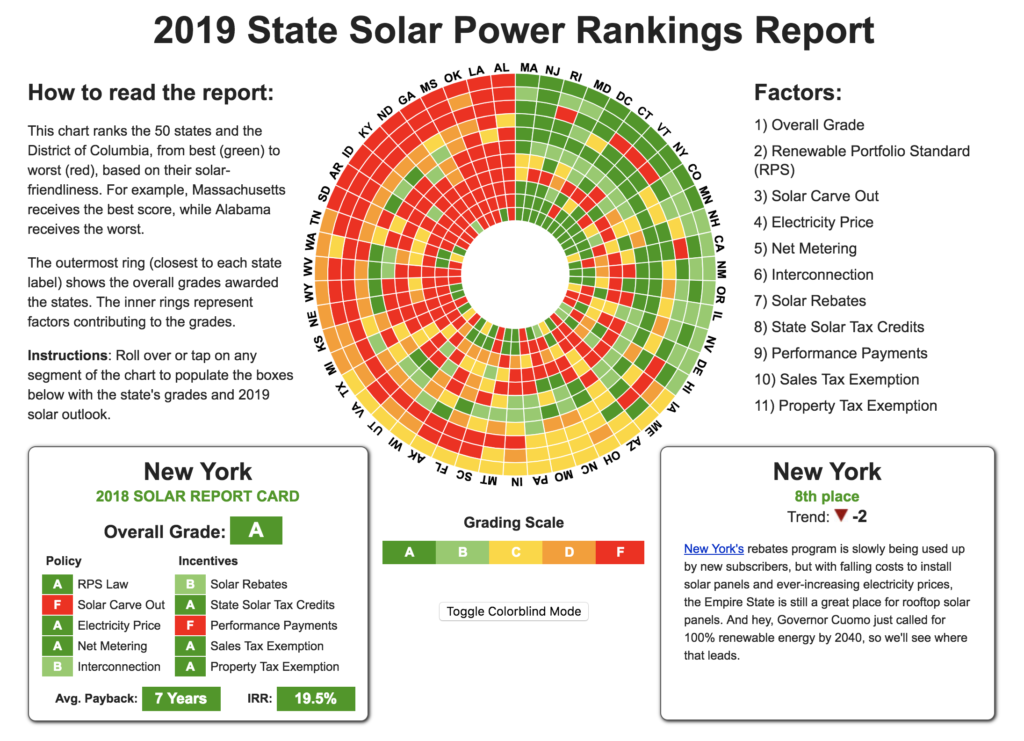Market Fallacy

A few months ago I got caught in a social media conversation and discovered an important truth. The discussion was not a new one. Someone was saying “if renewable energy (RE) had any value it would have taken over the market by now, and why are we politicizing this? Why does the nation need incentives to move to RE? We know that New York is a lousy place for solar anyway”…and more of the same.
I disagree with this notion that markets are wise and forward thinking and will adjust as needed, or even as purchasers wish them to. In a world where I cannot buy a bathing suit in a store in the middle of summer because the fall styles are already out, and there is a sale on sleds taking all the shelf space, I know the market does not pay attention to need nearly as much as it purports to. It pays attention to turnover and to current profit margins and to shareholders’ expectations for this quarter. For this fiscal quarter.
The truth is that people (and markets) do not change readily without guiding signals.
Low-energy, high-performing buildings came to exist when a very small group of early adopters, incentivized by grants and mandates and celebrated by certificates of achievement, and plaques on the wall, created examples for others to emulate. The U.S. Green Building Council and the LEED rating system created the awareness that has since, after 20 years of hard labor and focus, started to move the market to recognition of the value in design and construction of sustainable buildings. Now the focus is on continued greener operations of these buildings. Other entities, such as the International Living Futures Institute, have taken the next step and created aspirational guidelines to get us all onto a path of greater good, instead of merely less bad. And many practitioners, such as 7group, are approaching every project with an intent to heal the world and the systems we have broken due to our historic lack of understanding.
It took us many generations to create these systemic and deep-rooted issues, it will take us time to discover and employ smarter, more thoughtful, valuable, and regenerative solutions. This transition to awareness, discovery, and potential healing has so far taken more than 20 years.
It is a risk to be an early adopter, and risk takers NEED assistance and “coverage” for the perceived and real risks inherent in bucking the established, ingrained, thought process and systems. That is what government can and should undertake. Government should be the coverage for that perceived and in some cases actual risk. And government entities should be very clear to assess and publish the risks inherent in not changing. This is currently a missing piece. We all know it will take billions to underwrite any “Green New Deal” but has anyone talked about the cost of remaining with our status quo approaches? Eventual demise of the human race aside, if we know that our taxes will have to go up by xx% each year to handle the disasters we will be facing, would we be more willing to work differently to reduce the potential for those disastrous occurrences?
Once the applicability of a new method is proven, understood, and readily replicable, the incentives can go and the market can build on that established momentum. But this change won’t happen from nothing.
Why did I start this post with a snapshot of the 2019 solar report? First, it is an excellent info-graphic and I recommend you check out the source site with the interactive infographic, along with The Solutions Project which illustrates costs and cost-benefits for 100% RE uptake in each state of the USA, and in many countries around the world.
Second, it illustrates the power of and the need for incentives. I have heard for years that NY state is a poor solar performer, and that we will have trouble developing a robust PV industry. People say we may not be able to move to RE as our primary source, and solar will definitely be a non-player. But that is not the case. NY’s electric grid is currently 23% RE with the PV portion steadily growing, reaching over 1% in 2017 (the most recent info I could readily find). This uptake, in one of the most populous states with very high energy use, is because we have the signals in place to inform, grow, and shift the market. Alabama, a state with less energy use overall, and one of the sunniest states, currently provides only .02% of its electricity from solar sources. It does not have the necessary signals that will help pry the market out of its fossil fuel rut.
It will take personal will, political will, and government incentives and oversight to create the momentum that is needed for the market to then take over our greening work.
What other ruts can we grow out of as we green our world?
Jodi
Be the first to like this post (no login required)
Interesting article. There are similar topics:
https://mysolarperks.com
Thanks for adding this resource in! We really do have to up our game. It’s also not enough to just slap solar onto projects, so any thoughtful, integrated design is hugely valuable.